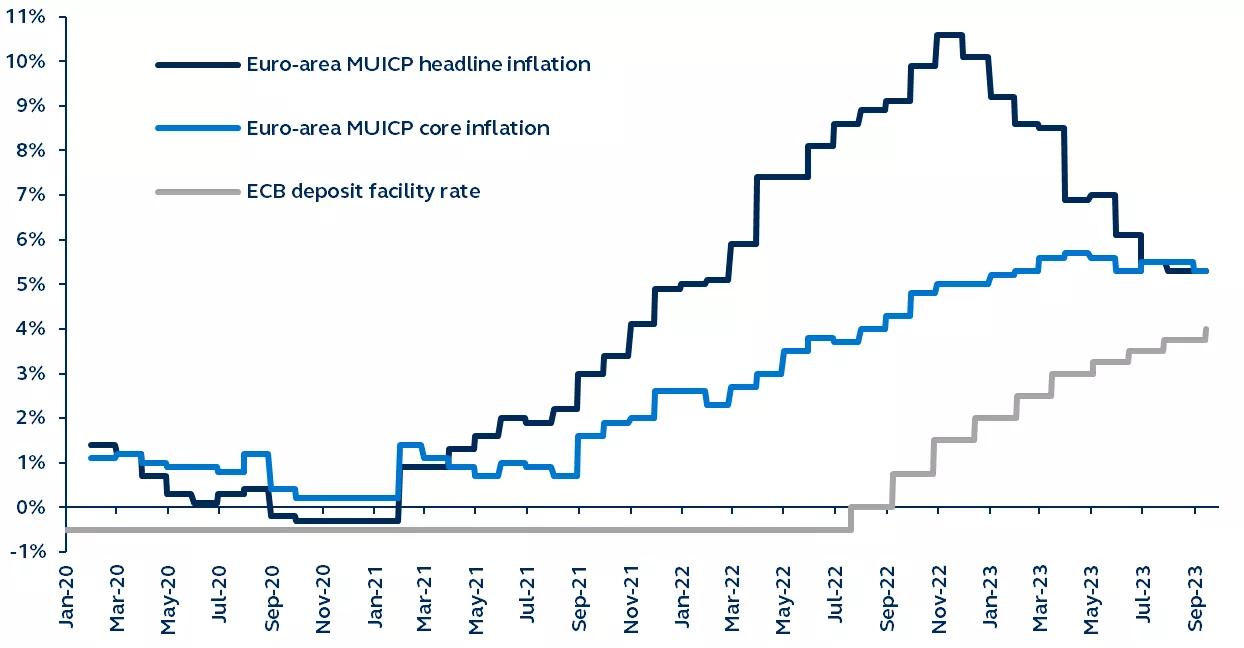Today, the European Central Bank (ECB) raised its three key policy rates for the tenth consecutive time, opting again to raise rates by 25 basis points (bps). The interest rate on the main refinancing operations, the marginal lending facility, and the deposit facility will be increased to 4.50%, 4.75%, and 4.00%, respectively.
With inflation still elevated but recession risks rising, markets were divided about today’s decision. Even the Governing Council was apparently locked in heated debate and only reached their decision to hike by a majority vote, not by unanimity. Ultimately, it seems that the ECB has put more weight on sticky inflation than the weakening growth environment, likely deciding that a hike was needed before a stagflationary dynamic gathered momentum.
The future policy path is still somewhat uncertain. The statement noted that, “the key ECB interest rates have reached levels that, maintained for a sufficiently long duration, will make a substantial contribution to the timely return of inflation to the target,” suggesting that the ECB believes rates are potentially at a sufficiently restrictive level and will just need to be maintained here until inflation pressures fade. Yet, in the press conference, ECB President Christine Lagarde refused to say that policy rates have peaked and continued to note the ECB’s data-dependent approach to policy decisions. However, she commented very clearly that the Governing Council was not discussing rate cuts.
Balance sheet operations and liquidity backstops
The ECB also confirmed that balance sheet normalization (Quantitative Tightening, or QT) continues “at a measured and predictable pace.” The asset purchase programme (APP) portfolio has been declining since the end of June, and the ECB confirmed its discontinuation of reinvestments under the APP. There was no change to the expectation for the reinvestment of PEPP principal payments until at least the end of 2024.
Latest staff projections: revisions deliver stagflation
The ECB published its updated full-year average staff projections. GDP growth was revised downward for all periods:
- 2023: 0.7% (decline from 0.9% in June)
- 2024: 1.0% (decline from 1.5 in June)
- 2025: 1.5% (decline from 1.6% in June)
By contrast, the inflation outlook was upwardly revised slightly:
- 2023: 5.6% (increase from 5.4% in June)
- 2024: 3.2% (increase from 3.0% in June)
- 2025: 2.1% (decline from 2.2% in June)
The opposing directions of the growth and inflation forecast revisions lay bare the ECB’s dilemma. Despite economic growth weakening and recession risks rising, underlying price pressures remain high. The recent increase in energy prices further complicates the issue as they will likely weigh on growth and push up inflation.
Markets see the ECB peak
The ECB will be weighing how much economic pain may be needed to achieve its price stability mandate. Following the announcement, European sovereign bond yields immediately declined, together with a weaker euro currency. The downward movement likely reflects the market's growing belief that today's decision was a dovish hike and that ECB policy rates have now peaked.




